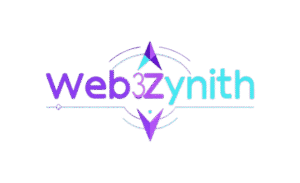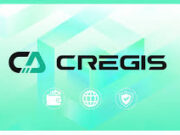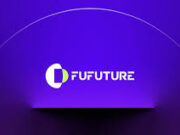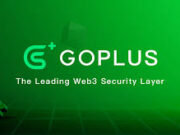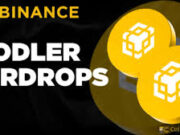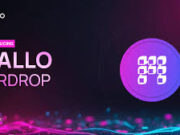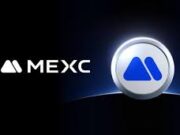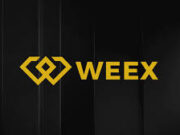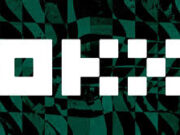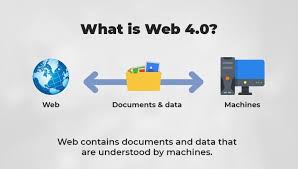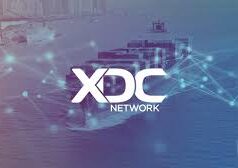The internet has been a wild ride, evolving from a clunky network of static pages to a dynamic, interconnected ecosystem that shapes how we live, work, and play. Today, we’re at a crossroads between Web 2.0, the familiar world of social media and centralized platforms, and Web 3.0, a decentralized vision promising user control and digital sovereignty. As these two paradigms clash, whispers of a Web 4.0 are already stirring. What’s at stake in this battle, and could Web 4.0 redefine the game entirely? Let’s dive into the differences, the stakes, and what the future might hold as of June 10, 2025.
Web 2.0: The Internet of Platforms and Powerhouses
Web 2.0, born in the early 2000s, is the internet we know best. It’s the era of user-generated content, social media giants, and seamless interactivity. Think Facebook, Google, Amazon, and YouTube—platforms that transformed the web into a vibrant, participatory space. Blogs, wikis, and apps let anyone create, share, and connect, democratizing content creation in ways Web 1.0’s static pages never could.
But there’s a catch. Web 2.0 is centralized to the core. Tech giants control the servers, harvest your data, and dictate terms. Every post, search, or purchase feeds their algorithms, turning your digital life into a commodity. X posts highlight the frustration: users are tired of shadowbanning, data breaches, and platforms profiting off personal information without fair compensation. The average user generates $2,000 annually for these companies, yet sees none of it. Web 2.0’s walled gardens prioritize profit over privacy, leaving many yearning for change.
Web 3.0: The Decentralized Dream
Enter Web 3.0, the internet’s rebellious streak. Built on blockchain technology, Web 3.0 aims to flip the script by decentralizing control. Instead of servers owned by Meta or Google, data lives on distributed networks like Ethereum, Solana, or IPFS. Smart contracts replace middlemen, and users own their data through wallets and NFTs. Want to monetize your content? Platforms like Lens Protocol let you do it directly, no algorithm gatekeepers needed.
Web 3.0’s promises are intoxicating:
- Ownership: Digital assets like NFTs or tokens give users true ownership, transferable across platforms.
- Privacy: Decentralized identity systems let you control what data you share, reducing reliance on Big Tech.
- Interoperability: Open protocols mean your digital identity or assets work across apps, not locked into one ecosystem.
- Incentives: Tokenomics reward creators and users, not just corporations. For example, Brave’s Basic Attention Token pays users for viewing ads.
The hype is real. Solana’s ecosystem, with projects like Fragmetric (see my previous post), has exploded, with TVL soaring to $8.3 billion. Bitcoin’s corporate adoption, as seen with firms like MicroStrategy holding $44.2 billion in BTC, underscores Web 3.0’s financial backbone. X posts are buzzing with excitement over decentralized social platforms like Farcaster, where users control their feeds and data.
But Web 3.0 isn’t perfect. Scalability issues plague blockchains—Ethereum’s gas fees can still sting, though Layer 2 solutions like Arbitrum help. User experience is clunky; wallets and private keys scare off non-crypto natives. Plus, scams and rug pulls remain rampant, with $3.7 billion lost to crypto fraud in 2024 alone, per Chainalysis. Critics argue Web 3.0’s complexity and speculative tokenomics make it more hype than revolution.
Web 2.0 vs. Web 3.0: The Showdown
The clash between Web 2.0 and Web 3.0 is a battle of philosophy and power. Here’s how they stack up:
- Control: Web 2.0 hands the reins to corporations; Web 3.0 gives them to users via decentralized governance. DAOs (Decentralized Autonomous Organizations) let communities vote on platform rules, unlike X’s opaque moderation policies.
- Data: Web 2.0 monetizes your data without consent; Web 3.0 lets you own and monetize it yourself through tokenized identities or data marketplaces.
- Accessibility: Web 2.0 wins on ease—anyone can sign up for Instagram. Web 3.0’s learning curve (wallets, seed phrases) alienates newcomers, though tools like Backpack are simplifying onboarding.
- Revenue: Web 2.0 funnels profits to shareholders; Web 3.0 distributes value through tokens, like Fragmetric’s F Points rewarding stakers.
- Trust: Web 2.0 relies on corporate promises; Web 3.0 uses trustless systems where code enforces agreements.
The sentiment on X reflects the tension. Some users praise Web 3.0’s freedom, with one post declaring, “No more Big Tech owning my data—Web3 is my escape!” Others scoff, citing high gas fees and clunky UX: “I’ll stick with Twitter over some blockchain app I need a PhD to use.” Data backs both sides: Web 3.0’s DeFi sector has $200 billion in TVL, but 80% of internet users still prefer Web 2.0 platforms for convenience.
Web 4.0: The Next Frontier?
Just as Web 3.0 challenges Web 2.0, whispers of Web 4.0 are emerging. So, what is it? While no formal definition exists, Web 4.0 is envisioned as the “intelligent web,” blending Web 3.0’s decentralization with AI, IoT, and immersive technologies like AR/VR. Think of a web where AI agents manage your digital assets, smart contracts execute seamlessly across devices, and virtual worlds integrate with physical reality.
Key features of Web 4.0 might include:
- AI-Driven Personalization: AI assistants, powered by models like Grok 3, could manage your decentralized identity, negotiate smart contracts, or curate content based on your Web 3.0 wallet activity.
- Seamless Integration: IoT devices (smart homes, cars) could interact with blockchain networks, enabling autonomous payments—like your car paying for charging via Solana.
- Immersive Experiences: Metaverse platforms, built on decentralized networks, could merge Web 3.0’s ownership with VR/AR, letting you own virtual land or avatars as NFTs.
- Zero-Knowledge Privacy: Advanced cryptography could make Web 4.0 the ultimate privacy layer, hiding transactions while maintaining trustless systems.
Is Web 4.0 real? Some say it’s already here. Projects like SingularityNET integrate AI with blockchain, and Apple’s Vision Pro hints at immersive web experiences. But skeptics argue it’s a buzzword, with Web 3.0’s scaling issues still unresolved. X posts are split: one user predicts “Web4 will be AI + blockchain running the metaverse,” while another quips, “Can we fix Ethereum’s gas fees before dreaming of Web 4.0?”
Data suggests Web 4.0 is plausible. Global AI spending hit $150 billion in 2024, and IoT connections reached 15 billion. Combining these with Web 3.0’s $2 trillion crypto market cap could birth a new paradigm by 2030. But challenges—computing power, energy costs, and regulatory hurdles—could delay it.
What’s at Stake?
The Web 2.0 vs. Web 3.0 battle isn’t just tech—it’s about who controls the internet’s future. Web 2.0’s giants won’t go quietly; Google and Meta are already dabbling in blockchain while doubling down on AI. Meanwhile, Web 3.0’s growth hinges on user adoption and UX improvements. If Web 4.0 emerges, it could bridge the gap, blending Web 2.0’s ease with Web 3.0’s freedom and AI’s smarts.
For users, the choice is stark: stick with Web 2.0’s convenience at the cost of privacy, or embrace Web 3.0’s complexity for control. Web 4.0 could offer the best of both, but it’s years away. For now, explore Web 3.0—stake on Fragmetric, try Farcaster, or mint an NFT. The future rewards those who adapt early.
What’s your take? Are you all-in on Web 3.0, loyal to Web 2.0, or waiting for Web 4.0’s AI-driven utopia? Drop your thoughts below and let’s shape the internet’s next chapter together!
